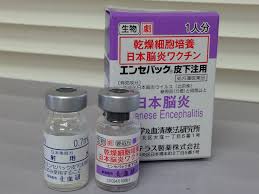This article is inspired from a news scroll which flashed the outbreak of Japanese Encephalitis (JE) in the Odisha state of India. An alarming number of persons in the tribal village of Malkangiri district was affected by the dangerous Japanese Encephalitis Virus (JEV). As I write this article, more than 80 persons have lost their lives due to this disease and among the rest who survived the fever, the chances of developing permanent neurological and psychiatric disorders is very likely. So, should you be worried about this viral encephalitis? What should you know about this disease? Continue reading to get the answers in simple, easy to read format.
An Overview of Japanese Encephalitis
- The disease was first reported in Japan in 1871
- It’s a viral disease which is related to the Dengue virus, Yellow fever virus and the West Nile virus
- Spread to humans by the bite of infected mosquitoes
- Clinical encephalitis cases have fever, headache, seizures, behaviour disorders, speech disorders, psychiatric manifestations as sequel to the disease
- There is no cure for the JE
- But, there is an effective vaccine to prevent Japanese Encephalitis
- Around 68000 persons are diagnosed with JE annually in the Asian endemic countries
Signs and Symptoms
Most of the cases are mild with no symptoms. Some persons may experience mild fever, headache which subsides within a few days. But, about 1 in 250 persons can develop encephalitis (infection of the brain) and their symptoms include:
- Rapid onset of high-grade fever
- Vomiting
- Neck stiffness
- Disorientation
- Seizures
- Coma –> Death
About half of those who survive the encephalitis may develop permanent behavioural or neurological impairments like recurrent seizures, inability to speak, paralysis etc.
Transmission
Humans are affected by the bite of infected mosquitoes (Culex tritaeniorhyncus). Human to human transmission doesn’t occur. Japanese Encephalitis transmission is known to occur in the south-east Asian countries and about 3 billion people are at risk. The Japanese Encephalitis Virus primarily infects vertebrate hosts like pigs and the mosquitoes gets infected when they feed on these pigs. JE is more likely to spread in areas where humans live in close proximity to these pigs. Transmission of the disease is more common in the rainy season and pre-harvest period where rice cultivation is prevalent.
Diagnosis
If you are living in an area where the transmission of Japanese Encephalitis is known to take place or if you are someone who is travelling to such an area, you should look out for the signs and symptoms of JE as mentioned above. The diagnosis of viral encephalitis is made by demonstrating the presence of virus, virus particles or antibodies to virus in the blood or cerebrospinal fluid (CSF).
Treatment
Unfortunately, there is no proven anti-viral treatment for Japanese Encephalitis. Symptomatic treatment to stabilise the patient is done at hospitals. Anyone who is suspected of JE should be immediately hospitalised for further management.
Prevention
As of now, the two ways to prevent the spread of Japanese Encephalitis are:
- Taking the JE vaccine
- Staying away from mosquito bites
The live-attenuated JE vaccine has been approved for more than 3 years now and is very much effective in preventing the disease in high risk areas. World Health Organization has recommended to include the JE vaccine in the national immunization programmes of countries where the transmission of Japanese Encephalitis is known to occur. In Odisha, the JE vaccine will be implemented from December 2016 onwards. In Kerala, the JE vaccine has already been introduced in the district of Alapuzha.The JE vaccine is given intramuscularly to infants at 9 months (along with Measles vaccine) and 2nd dose at 16-18 months.

For a closer look at the national vaccination schedule, click here.
To get all the articles on vaccines, click here.
Getting rid of mosquitoes is an effective way to keep one safe from the holds of JE, Dengue fever, Malaria, Yellow fever and Filariasis. Using long sleeve clothes, [easyazon_link identifier=”B00SMF4CPY” locale=”IN” tag=”beithedoc-21″ popups=”n”]mosquito nets[/easyazon_link], coils, vaporisers, [easyazon_link identifier=”B00YRETCZE” locale=”IN” tag=”beithedoc-21″ popups=”n”]repellants[/easyazon_link] [easyazon_link identifier=”B00HVSSZY2″ locale=”IN” tag=”beithedoc-21″ popups=”n”], creams[/easyazon_link] etc can help if you’re living in a JE prevalent area.
How did you like this article? If you have anything more to add to this article, please share them in the comments section below. To get more such useful articles delivered in to your mailbox, simply subscribe to the mailing list by filling up the form at the top of this page.